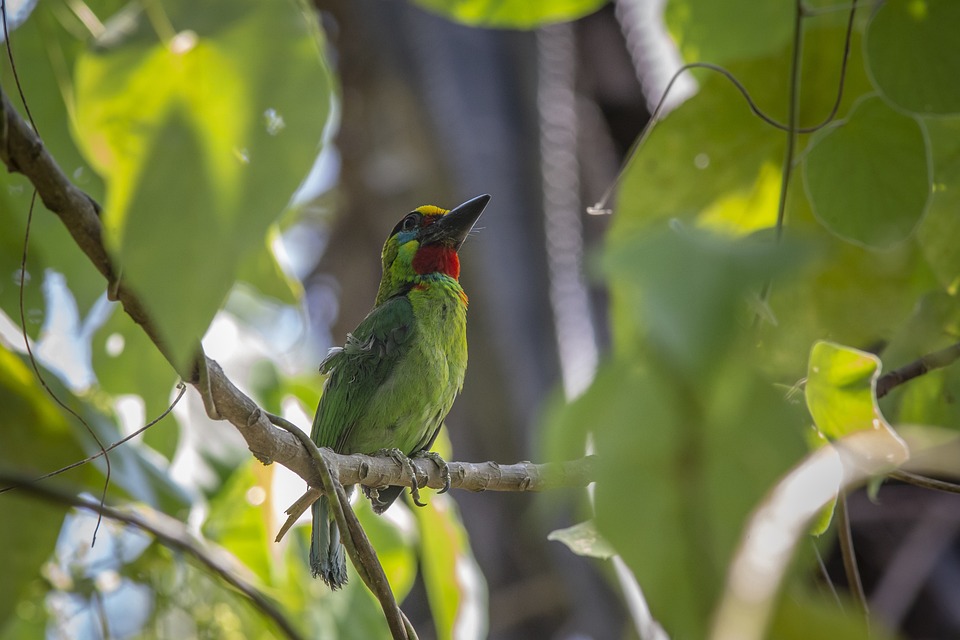Parrots are known for their intelligence, social nature, and ability to form strong bonds with their human companions. These beautiful birds also experience a wide range of emotions, including joy and happiness. As responsible parrot owners, it is crucial to recognize and understand the signs of these positive emotions in order to provide a nurturing and fulfilling environment for our feathered friends.
One of the most common signs of joy and happiness in parrots is their vocalizations and sounds. Happy chirping and singing are often heard when a parrot is content and at ease. They may also engage in playful screeching or squawking as a way to express their happiness. Additionally, some parrots may emit a contented purring or cooing sound, similar to that of a cat, when they are feeling relaxed and happy.
Body language is another important indicator of a parrot’s emotions. When a parrot is joyful and happy, their feathers may appear fluffed and relaxed. Their eyes will be bright and alert, showing a sense of curiosity and engagement with their surroundings. A relaxed body posture, with no signs of fear or anxiety, is also a positive sign. Parrots may display playful movements, such as head bobbing or wing flapping, as a way to express their happiness and engage in their environment.
Active and engaging behavior is another clear sign of joy and happiness in parrots. Playfulness is often observed in happy parrots, such as hanging upside down from their perches or tossing toys around. They may also show a willingness to explore their environment and exhibit curiosity and interest in interacting with humans or other parrots. Enthusiastic preening or grooming is another behavior that indicates a parrot is content and enjoying their surroundings.
Appetite and feeding behavior can also provide insights into a parrot’s emotional state. When a parrot is happy, they will show eagerness to eat, especially when presented with their favorite foods or treats. They will have a relaxed and comfortable eating posture and may even engage in playful food tossing or manipulation as a way to express their happiness.
Social interactions are essential for parrots, and they thrive in the company of their human companions and other parrots. When a parrot is happy, they may seek physical contact or cuddling with humans or other parrots. They may also engage in mutual grooming with bonded mates or trusted companions, as well as share toys or engage in playful interactions with cage mates.
Playful body language is another clear sign of joy and happiness in parrots. They may spread their wings wide open, wag or fan their tails, bob their heads rhythmically, or even hang upside down. These playful behaviors indicate that a parrot is feeling joyful and content in their environment.
While it is important to recognize signs of joy and happiness in parrots, it is also essential to address some commonly asked questions regarding their emotions. Parrots can indeed experience happiness just like humans. They possess complex emotional lives and can feel a range of emotions, including joy, contentment, and affection.
Recognizing signs of joy and happiness in parrots is crucial because it helps us gauge their overall well-being and satisfaction. By understanding their emotions, we can provide a stimulating and enriching environment that promotes their mental and physical health. It is important to provide a variety of toys, puzzles, and foraging opportunities to keep them mentally engaged and enhance their happiness. Toys that encourage climbing, swinging, and shredding are particularly beneficial for their mental stimulation.
Excessive displays of joy and happiness are generally not a cause for concern. However, sudden changes in behavior should always be monitored and evaluated, as they could indicate underlying health issues or stressors. If a parrot consistently shows signs of unhappiness, it is essential to assess their environment, diet, social interactions, and overall health. Consulting with an avian veterinarian or an experienced parrot behaviorist can provide valuable insights and guidance.
In conclusion, recognizing signs of joy and happiness in parrots is crucial for their well-being. Each parrot is unique, and their signs of joy and happiness may vary. By observing their behavior closely and creating a nurturing environment, we can ensure their happiness and strengthen the bond we share with these incredible creatures.









